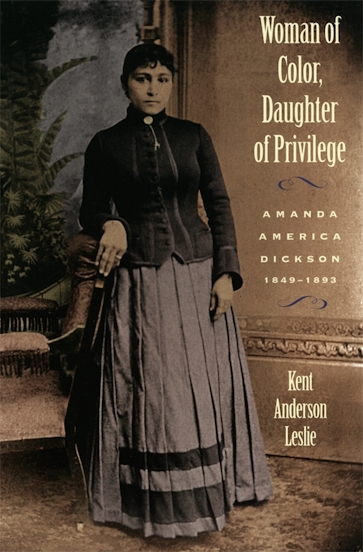Woman of Color, Daughter of Privilege: Amanda America Dickson, 1849–1893Posted in Biography, Books, History, Law, Media Archive, Monographs, Slavery, United States, Women on 2010-06-25 21:46Z by Steven |
Woman of Color, Daughter of Privilege: Amanda America Dickson, 1849–1893
University of Georgia Press
1996
248 pages
Illustrated
Trim size: 6 x 9
Paperback ISBN: 978-0-8203-1871-4
Kent Anderson Leslie
The true story of a slave who became the wealthiest black woman in the South
This fascinating story of Amanda America Dickson, born the privileged daughter of a white planter and an unconsenting slave in antebellum Georgia, shows how strong-willed individuals defied racial strictures for the sake of family. Kent Anderson Leslie uses the events of Dickson’s life to explore the forces driving southern race and gender relations from the days of King Cotton through the Civil War, Reconstruction, and New South eras.
Although legally a slave herself well into her adolescence, Dickson was much favored by her father and lived comfortably in his house, receiving a genteel upbringing and education. After her father died in 1885 Dickson inherited most of his half-million dollar estate, sparking off two years of legal battles with white relatives. When the Georgia Supreme Court upheld the will, Dickson became the largest landowner in Hancock County, Georgia, and the wealthiest black woman in the post-Civil War South.
Kent Anderson Leslie’s portrayal of Dickson is enhanced by a wealth of details about plantation life; the elaborate codes of behavior for men and women, blacks and whites in the South; and the equally complicated circumstances under which racial transgressions were sometimes ignored, tolerated, or even accepted.
Table of Contents
- Acknowledgments
- Introduction
- CHAPTER 1. Exceptions to the Rules
- CHAPTER 2. A Story
- CHAPTER 3. The Dickson Will
- CHAPTER 4. The Death of a Lady
- Appendixes
- Notes
- Bibliography
- Index



